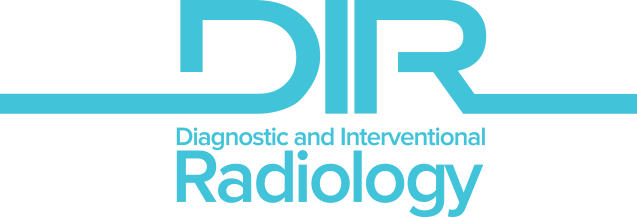ABSTRACT
PURPOSE
To retrospectively evaluate peripheral arterial lesions treated with stent-grafts in various territories and to identify the role of computed tomography angiography (CTA), both in diagnosis and follow-up.
MATERIALS AND METHODS
The study included 19 patients (11 male, 8 female) aged between 24 and 85 years. In all, 24 stent-grafts were used to seal an extravasation in 3 patients, a pseudoaneurysm/aneurysm in 12 patients, and an arteriovenous fistula in 4 patients. Self-expandable and balloon-expandable stent-grafts were used, all of which were covered with polytetrafluoroethylene material. Iatrogenic etiologies were responsible in 11 of the patients. In total, 5 superficial femoral, 2 deep femoral, 4 external iliac, 3 common iliac, 1 common carotid, 1 internal carotid, 1 subclavian, 1 renal artery, and 1 thyrocervical trunk lesion were treated.
RESULTS
The technical success rate was 100%, with no periprocedural complications. Mean follow-up was 18 months (range: 1–72 months). CTA was performed in 10 patients for diagnosis and in 7 patients for follow- up. There was no stent migration, but 1 stent crush. The total vessel occlusion rate was 16.6%, all diagnosed using CTA.
CONCLUSION
Stent-graft applications offer quick, single-step treatment, with few procedural complications. However, long-term durability remains a major concern. CTA is a very valuable tool, both for diagnosis and follow- up. Pseudoaneurysms and extravasations can be demonstrated successfully, as well as incomplete arteriovenous fistula closure, and patent or occluded stent-grafts.



